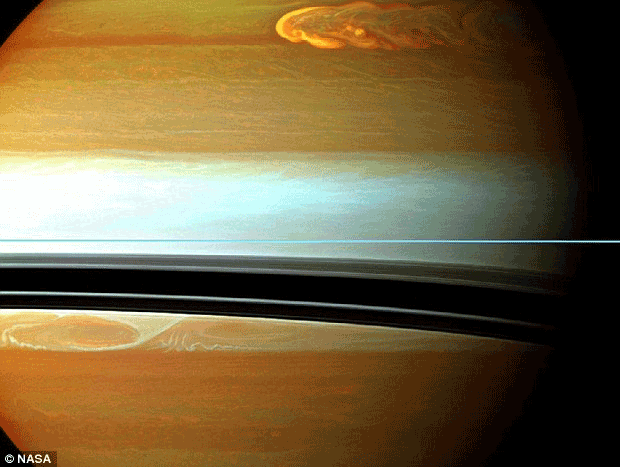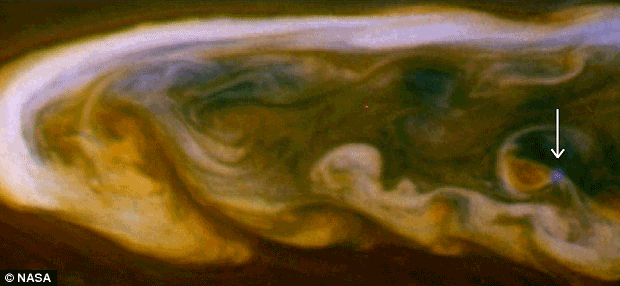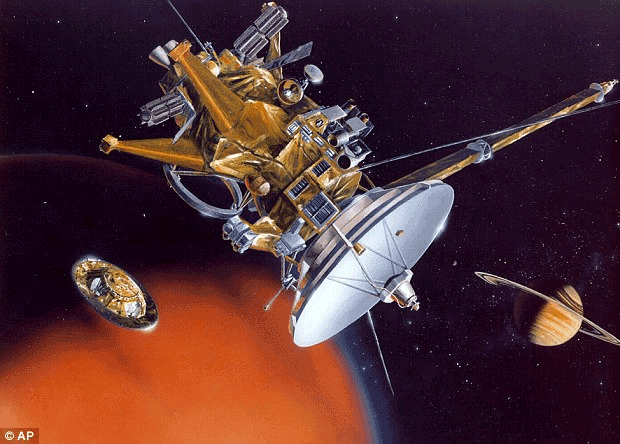|
An incredible view of daytime lightning on Saturn
during one of the biggest storms the ringed planet has ever seen has
been captured by a NASA spacecraft.
The new images unveiled by NASA - which it said came as a big surprise -
came after its Cassini orbiter captured the lightning storm while
orbiting the planet.
|
|
 |
|
The bright blue spots on the picture below of the enormous storm, which
broke out on the planet last year, shows the powerful lightning.
Speaking to Fox News.com, Ulyana Dyudina, from the California Institute
of Technology in Pasadena, admitted they did not expect these findings:
'We didn't think we'd see lighting on Saturn's day side —only its night
side.
|
|

|
|
'The fact that Cassini was able to detect the lightning means that it
was very intense.'
The spacecraft was observing a giant storm on the planet in March last
year when it spotted the lightning.
Researchers were able to locate the lightning after a blue filter on the
spacecraft's main camera recorded the flashes.
|
|

|
|
The blue tint was then exaggerated by scientists who could pin down the
size and location of the lightning strikes.
The researchers found that the lightning strike which the Cassini
orbiter recorded was incredibly powerful.
The energy from the visible flashes of lightning could have spiked about
3 billion watts over a second - equal to some of the strongest and most
powerful lightning flashes recorded on Earth.
Scientists said the lightning was recorded across an area 100 miles
wide. The spacecraft spotted a total of eight lightning flashes.
|
|
 |
|
The storm which resulted in the powerful lightning strike is the
longest-lived storm ever recorded on the planet, beginning in December
2010 and lasting for an incredible 200 days. It ended in late June last
year.
At its peak, it wrapped completely around the planet.
The Cassini spacecraft was launched by NASA in 1997 and since 2006 has
been orbiting Saturn. Its latest mission is expected to last until 2017.
Cassini project scientist Linda Spilker said: 'Saturn's atmosphere has
been changing over the eight years Cassini has been at Saturn, and we
can't wait to see what happens next.
|